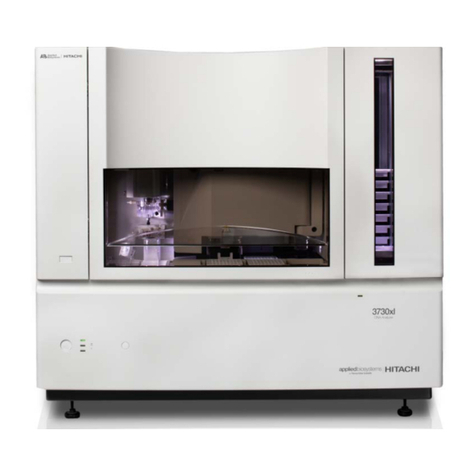
■CHAPTER 6 Run calibrations and install checks ................... 103
Section 6.1 Run spatial and spectral calibrations .................................. 104
Run a spatial calibration ....................................................... 104
Spatial calibration overview ................................................ 104
When to perform a spatial calibration ....................................... 104
Perform a spatial calibration ............................................... 104
Evaluate the spatial calibration profile ...................................... 105
Example spatial profiles ................................................... 106
Export spatial calibration results ........................................... 106
View and print a calibration report .......................................... 107
Save historical reports (.pdf) for record keeping .............................. 107
Run a spectral calibration ...................................................... 107
Spectral calibration overview .............................................. 107
When to perform a spectral calibration ...................................... 107
Estimated run time ....................................................... 108
Prepare for spectral calibration ............................................ 108
Perform a spectral calibration .............................................. 111
Spectral Quality Values and Condition Numbers .............................. 113
Evaluate the spectral calibration data ....................................... 114
What you see during a spectral calibration ................................... 115
Capillary information sharing .............................................. 116
Example spectral calibration data .......................................... 118
Export spectral calibration results .......................................... 119
View and print a calibration report .......................................... 119
Save historical reports (.pdf) for record keeping .............................. 120
View the spectral calibration history ........................................ 120
Section 6.2 Run an install check ................................................ 121
Run a Sequencing install check ................................................. 121
When to perform a sequencing install check ................................. 121
Estimated run time ....................................................... 121
Prepare for the sequencing install check .................................... 121
Perform a sequencing install check ......................................... 123
What you see during a sequencing install check .............................. 125
Pass/fail criteria for the optional spectral calibration ......................... 126
Pass/fail criteria for the sequencing install check ............................. 127
Evaluate sequencing install standard data ................................... 128
Example sequencing install check results ................................... 129
View previously run install standards ........................................ 129
View and print an install check report ....................................... 130
Save historical reports (.pdf) for record keeping .............................. 130
Run a fragment/HID install check .............................................. 130
When to perform a fragment/HID install check ............................... 130
Estimated run time ....................................................... 130
Prepare for the fragment/HID install check ................................. 130
Perform the fragment/HID install check ..................................... 133
Contents
3500/3500xL Genetic Analyzer User Guide—Data Collection Software v3.1
7




























